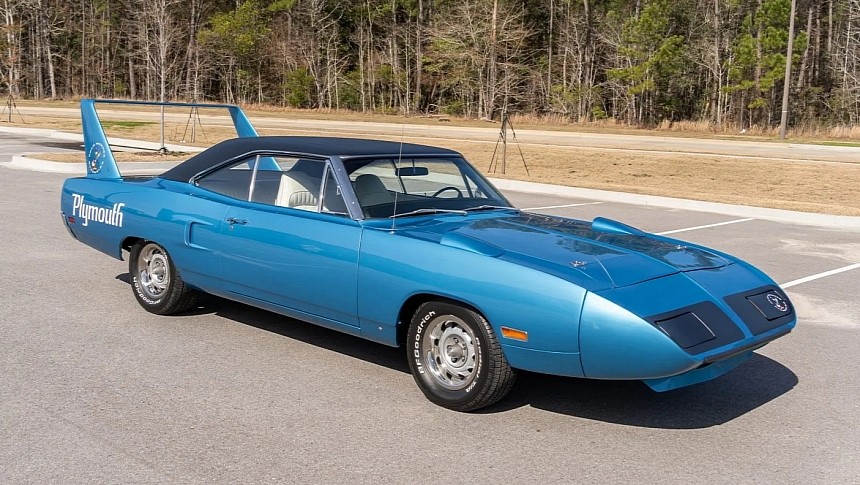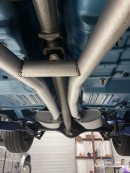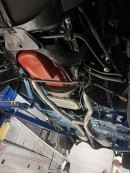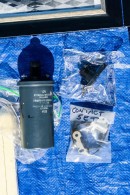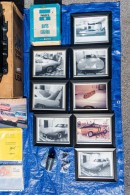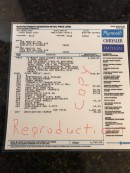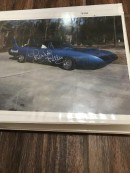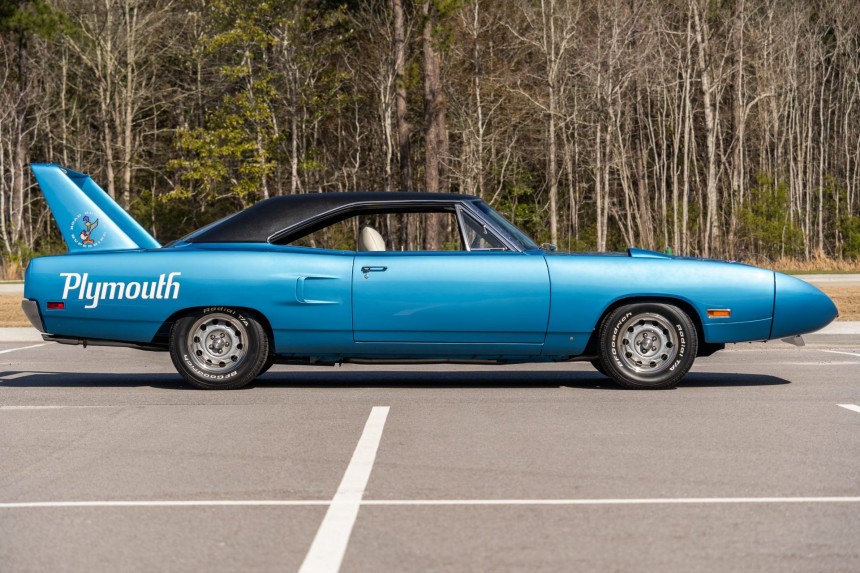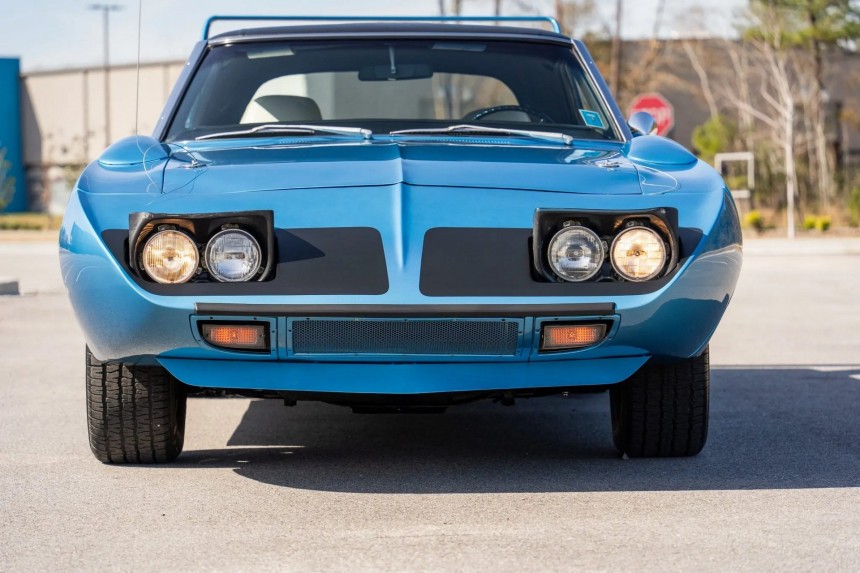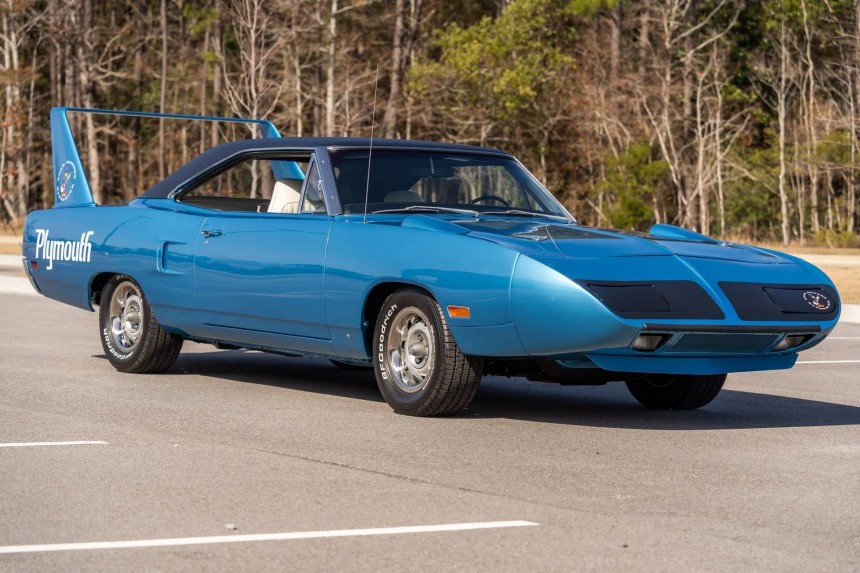1970 was a turning point for performance motoring in the U.S., and not just because of bureaucratic changes (both from insurers and the EPA). One of Detroit’s last high-speed stands, NASCAR, was hammered with changes from within. The sanctioning body required that new models could be brought to the brickyards if the production numbers for the street variants were twice as high as the carmaker's dealerships in the country. That’s why Mother Mopar brooded four times as many Superbirds than Daytonas.
The story is a bit more intricate than just changing the rules. The Daytona was released in the fall of 1968 as a 1969 model and consequently raced for that season. However, it was a Dodge, not a Plymouth, and Richard Petty was very fond of its Plymouths. Having been denied a similar aerodynamic machine by Chrysler, The King promptly jumped ship and raced Fords.
Chrysler’s brass was caught with their pants down and couldn’t do anything to set things straight with their champion. But the corporation’s top hats weren’t about to let go of the goose with the golden eggs and retaliated in the finest way possible.
The Plymouth Road Runner went to the wind tunnel, got a nose cone and a wing, and returned as the Superbird. Richard Petty approved, came back, and blew the engine of one in the opening race of the 1970 season, the Daytona 500. (Another Petty Enterprises Superbird took the checkered flag, though).
Truth be told, the winged warriors weren’t the first cars Chrysler used the wind tunnel to build: in the early 30s, the Airflow’s curvy profile was extensively tested – using scale models – before being transplanted into metal. But three decades later, the corporation had enough experience and expertise to build missiles and rockets (Allan Shepard debuted the U.S.’ manned space flight in a Chrysler rocket in 1961).
One of the men who worked on the Mopar space rocket program was John Vaughn, an aerodynamicist at Chrysler Corporation Space Division. When McDonnell Douglas was awarded the contract to build the Saturn V moon rocket, the engineers retorted to lending their expertise to the second-fastest Chrysler product available: NASCAR racers.
John Vaughn worked extensively on developing the Dodge Charger 500 and its Daytona sibling. Naturally, when the Plymouth division started planning the Superbird, the air-splitting mastermind was invited to share his knowledge. 1,920 Plymouth Road Runner Superbirds were assembled so that NASCAR would allow the car on the grid in 1970, and several other examples are believed to have been built over the mandatory homologation threshold.
A definitive production number is extremely difficult, if not impossible, to provide. Still, the general agreement is that the famous one-year-only ‘Bird was released in fewer than 2,000 units for street use. One of those was John Vaughn’s personal car for a number of years after it was initially sold to a man in Tennessee. The elusive winged Mopar was finished on November 30, 1969, and changed several owners before one of them initiated a total restoration of the classic icon twenty years ago.
The project was completed in 2005, and every piece of the car was taken off, inspected, repaired, rebuilt, or replaced (the former applies to the left rear quarter). The car still has its original engine, Torqueflite transmission, and 3.55 Sure Grip rear, and shows 91,000 miles on the clock (146k kilometers). The car was bought by its current owner in January 2010 and hasn’t seen much road action since, with 1,165 miles / 1,875 km (averaging around 83 miles / 134 km per year).
Despite their rarity, not all Superbirds are equal since they belong to the larger Chrysler family of automobiles. In the '60s and '70s, Mopar's high performance meant one thing, first and foremost: a 426 Street HEMI V8, which this car hasn’t. The muscle comes from the entry-level (in Superbird terms) 440-4 Super Commando eight-cylinder motor.
This example is the ordinary Superbird since 1,084 came with the 375-hp, 480-lb-ft (380 PS, 651 Nm) 7.2-liter V8 with a single four-barrel carburetor. Even more so, the blue car featured here is an automatic, one of the 618 built in that short NASCAR homologation batch. In an eerie coincidence, the total number of automatic-transmission Plymouth Superbirds (all engines included) also equals 1,084.
But just because it’s the least rare doesn’t make it commonplace, and the car commands a high premium in the current buyer’s market environment. This restored and stunning-looking example may not be an original survivor in its current state. Several alterations have been made to the initial setup, like the electronic ignition, the aluminum radiator with a 16-inch fan, the overflow tank for the coolant, and the clear fuel filter.
Critically, all the factory-installed parts are still available for the next owner, together with library-sized documentation, detailed maintenance records, and photos from the restoration. As a bonus, a collection of photographs taken by John Vaughn during the development of the aero cars is included in the sale. The online auction ends in six days, and the current high-water mark sits at $185,000, relatively low for a Superbird in prime condition.
As a fun fact, the aerodynamicist went to the racetracks and visited the garages of Ford and Mercury (dressed as a tourist) to take spy photos of whatever he could find of interest for his work. There’s a photo of the Mario Andretti Ford Torino fastback, signed by John Vaughn, that testifies to the man’s keen interest in what the competition was up to during the heated days and nights of the horsepower arms race.
Chrysler’s brass was caught with their pants down and couldn’t do anything to set things straight with their champion. But the corporation’s top hats weren’t about to let go of the goose with the golden eggs and retaliated in the finest way possible.
The Plymouth Road Runner went to the wind tunnel, got a nose cone and a wing, and returned as the Superbird. Richard Petty approved, came back, and blew the engine of one in the opening race of the 1970 season, the Daytona 500. (Another Petty Enterprises Superbird took the checkered flag, though).
Truth be told, the winged warriors weren’t the first cars Chrysler used the wind tunnel to build: in the early 30s, the Airflow’s curvy profile was extensively tested – using scale models – before being transplanted into metal. But three decades later, the corporation had enough experience and expertise to build missiles and rockets (Allan Shepard debuted the U.S.’ manned space flight in a Chrysler rocket in 1961).
John Vaughn worked extensively on developing the Dodge Charger 500 and its Daytona sibling. Naturally, when the Plymouth division started planning the Superbird, the air-splitting mastermind was invited to share his knowledge. 1,920 Plymouth Road Runner Superbirds were assembled so that NASCAR would allow the car on the grid in 1970, and several other examples are believed to have been built over the mandatory homologation threshold.
A definitive production number is extremely difficult, if not impossible, to provide. Still, the general agreement is that the famous one-year-only ‘Bird was released in fewer than 2,000 units for street use. One of those was John Vaughn’s personal car for a number of years after it was initially sold to a man in Tennessee. The elusive winged Mopar was finished on November 30, 1969, and changed several owners before one of them initiated a total restoration of the classic icon twenty years ago.
Despite their rarity, not all Superbirds are equal since they belong to the larger Chrysler family of automobiles. In the '60s and '70s, Mopar's high performance meant one thing, first and foremost: a 426 Street HEMI V8, which this car hasn’t. The muscle comes from the entry-level (in Superbird terms) 440-4 Super Commando eight-cylinder motor.
This example is the ordinary Superbird since 1,084 came with the 375-hp, 480-lb-ft (380 PS, 651 Nm) 7.2-liter V8 with a single four-barrel carburetor. Even more so, the blue car featured here is an automatic, one of the 618 built in that short NASCAR homologation batch. In an eerie coincidence, the total number of automatic-transmission Plymouth Superbirds (all engines included) also equals 1,084.
Critically, all the factory-installed parts are still available for the next owner, together with library-sized documentation, detailed maintenance records, and photos from the restoration. As a bonus, a collection of photographs taken by John Vaughn during the development of the aero cars is included in the sale. The online auction ends in six days, and the current high-water mark sits at $185,000, relatively low for a Superbird in prime condition.
As a fun fact, the aerodynamicist went to the racetracks and visited the garages of Ford and Mercury (dressed as a tourist) to take spy photos of whatever he could find of interest for his work. There’s a photo of the Mario Andretti Ford Torino fastback, signed by John Vaughn, that testifies to the man’s keen interest in what the competition was up to during the heated days and nights of the horsepower arms race.
